1、JUC是什么?
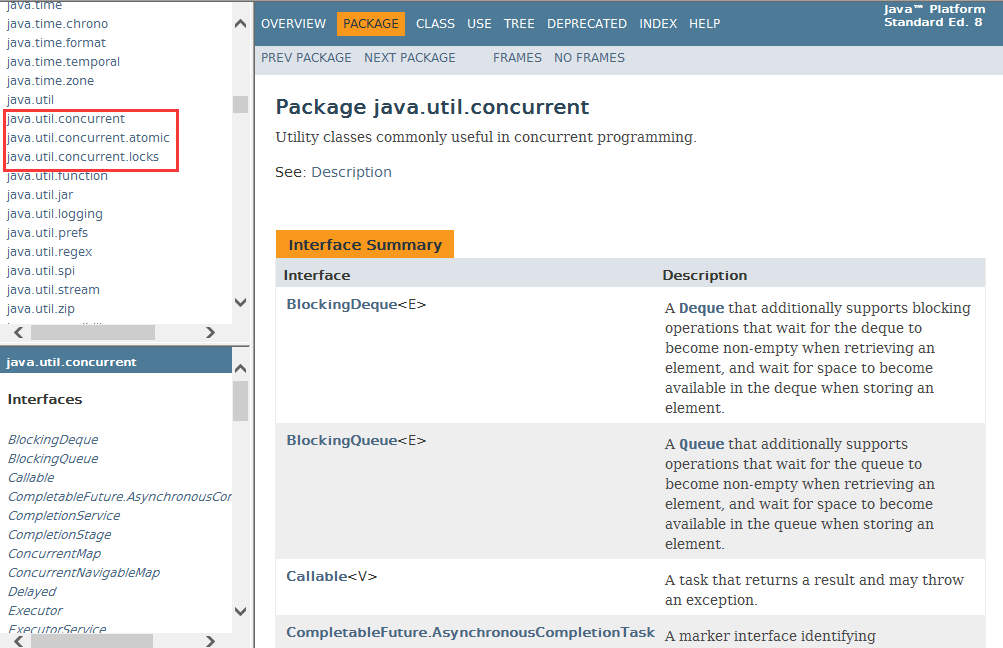
2.首先要回忆一下什么是进程和线程。
进程:进程是一个具有一定独立功能的程序关于某个数据集合的一次运行活动。它是操作系统动态执行的基本单元,在传统的操作系统中,进程既是基本的分配单元,也是基本的执行单元。
线程:通常在一个进程中可以包含若干个线程,当然一个进程中至少有一个线程,不然没有存在的意义。线程可以利用进程所拥有的资源,在引入线程的操作系统中,通常都是把进程作为分配资源的基本单位,而把线程作为独立运行和独立调度的基本单位,由于线程比进程更小,基本上不拥有系统资源,故对它的调度所付出的开销就会小得多,能更高效的提高系统多个程序间并发执行的程度。
举例说明线程和进程
使用QQ,查看进程一定有一个QQ.exe的进程,我可以用qq和A文字聊天,和B视频聊天,给C传文件,给D发一段语言,QQ支持录入信息的搜索。
大四的时候写论文,用word写论文,同时用QQ音乐放音乐,同时用QQ聊天,多个进程。
word如没有保存,停电关机,再通电后打开word可以恢复之前未保存的文档,word也会检查你的拼写,两个线程:容灾备份,语法检查
3.线程状态
Thread.State
public enum State {
/**
* Thread state for a thread which has not yet started.
*/
NEW,(新建)
/**
* Thread state for a runnable thread. A thread in the runnable
* state is executing in the Java virtual machine but it may
* be waiting for other resources from the operating system
* such as processor.
*/
RUNNABLE,(准备就绪)
/**
* Thread state for a thread blocked waiting for a monitor lock.
* A thread in the blocked state is waiting for a monitor lock
* to enter a synchronized block/method or
* reenter a synchronized block/method after calling
* {@link Object#wait() Object.wait}.
*/
BLOCKED,(阻塞)
/**
* Thread state for a waiting thread.
* A thread is in the waiting state due to calling one of the
* following methods:
* <ul>
* <li>{@link Object#wait() Object.wait} with no timeout</li>
* <li>{@link #join() Thread.join} with no timeout</li>
* <li>{@link LockSupport#park() LockSupport.park}</li>
* </ul>
*
* <p>A thread in the waiting state is waiting for another thread to
* perform a particular action.
*
* For example, a thread that has called <tt>Object.wait()</tt>
* on an object is waiting for another thread to call
* <tt>Object.notify()</tt> or <tt>Object.notifyAll()</tt> on
* that object. A thread that has called <tt>Thread.join()</tt>
* is waiting for a specified thread to terminate.
*/
WAITING,(不见不散)
/**
* Thread state for a waiting thread with a specified waiting time.
* A thread is in the timed waiting state due to calling one of
* the following methods with a specified positive waiting time:
* <ul>
* <li>{@link #sleep Thread.sleep}</li>
* <li>{@link Object#wait(long) Object.wait} with timeout</li>
* <li>{@link #join(long) Thread.join} with timeout</li>
* <li>{@link LockSupport#parkNanos LockSupport.parkNanos}</li>
* <li>{@link LockSupport#parkUntil LockSupport.parkUntil}</li>
* </ul>
*/
TIMED_WAITING,(过时不候)
/**
* Thread state for a terminated thread.
* The thread has completed execution.
*/
TERMINATED;(终结)
}
4.wait/sleep的区别?
wait/sleep
功能都是当前线程暂停,有什么区别?
wait放开手去睡,放开手里的锁
sleep握紧手去睡,醒了手里还有锁
5.什么是并发?什么是并行?
并发:同一时刻多个线程在访问同一个资源,多个线程对一个点
例子:小米9今天上午10点,限量抢购
春运抢票
电商秒杀...
并行:多项工作一起执行,之后再汇总
例子:泡方便面,电水壶烧水,一边撕调料倒入桶中
6.接下来说一下Lock接口
6.1是什么
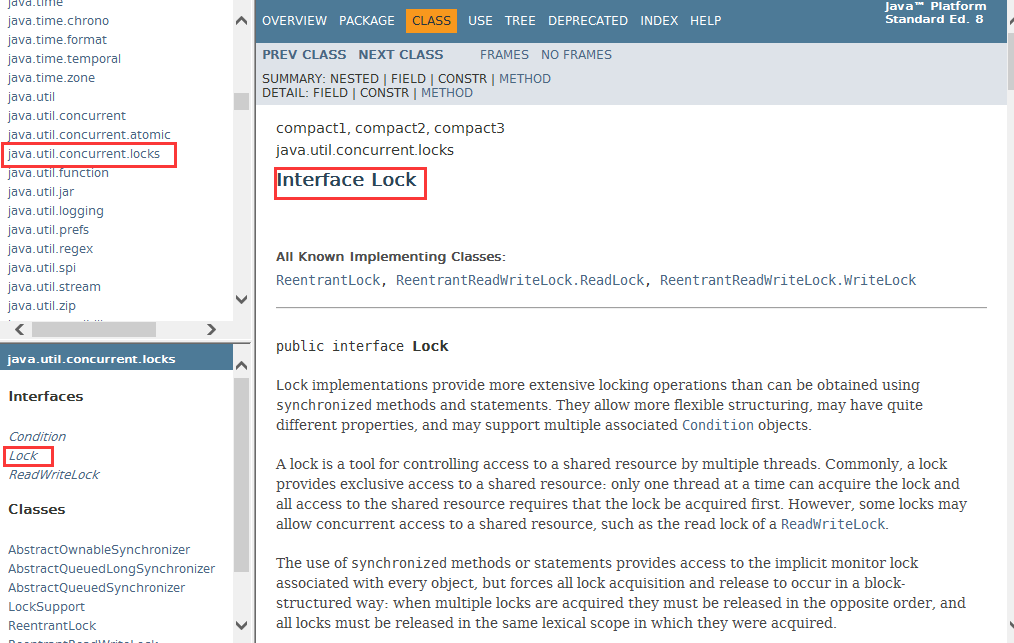
Lock implementations provide more extensive locking operations than can be obtained using synchronized methods and statements. They allow more flexible structuring, may have quite different properties, and may support multiple associated Condition objects.
锁实现提供了比使用同步方法和语句可以获得的更广泛的锁操作。它们允许更灵活的结构,可能具有非常不同的属性,并且可能支持多个关联的条件对象。
6.2 Lock接口的实现ReentrantLock可重入锁
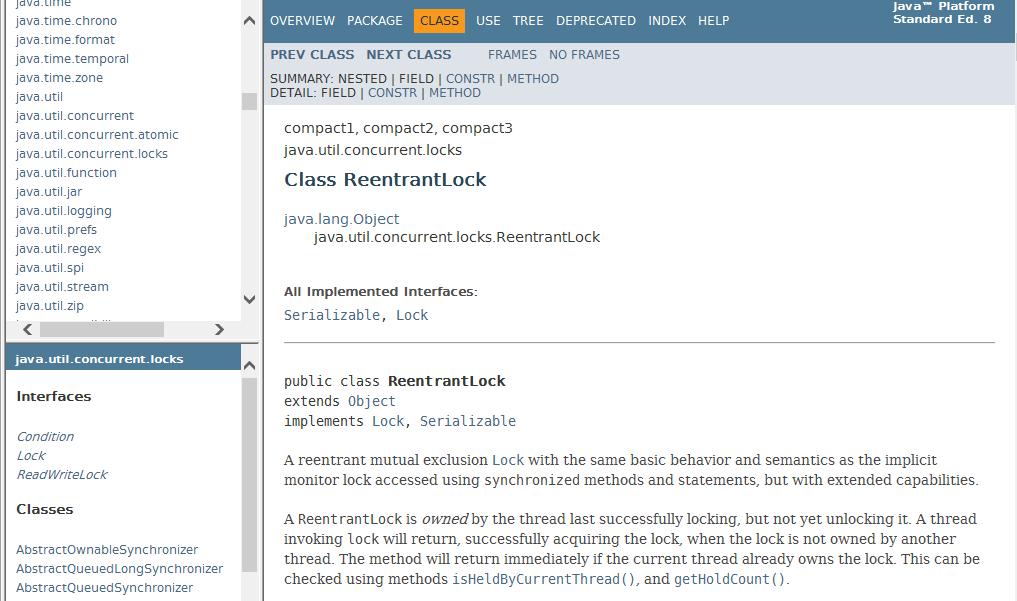
6.3如何使用呢
class X {
private final ReentrantLock lock = new ReentrantLock();
// ...
public void m() {
lock.lock(); // block until condition holds
try {
// ... method body
} finally {
lock.unlock()
}
}
}
6.4创建线程的方式
6.4.1继承Thread(java是单继承,只能扩展一次资源宝贵,要用接口方式)
6.4.2new Thread() Thread t1 = new Thread(); t1.start();也不能这么写
6.4.3
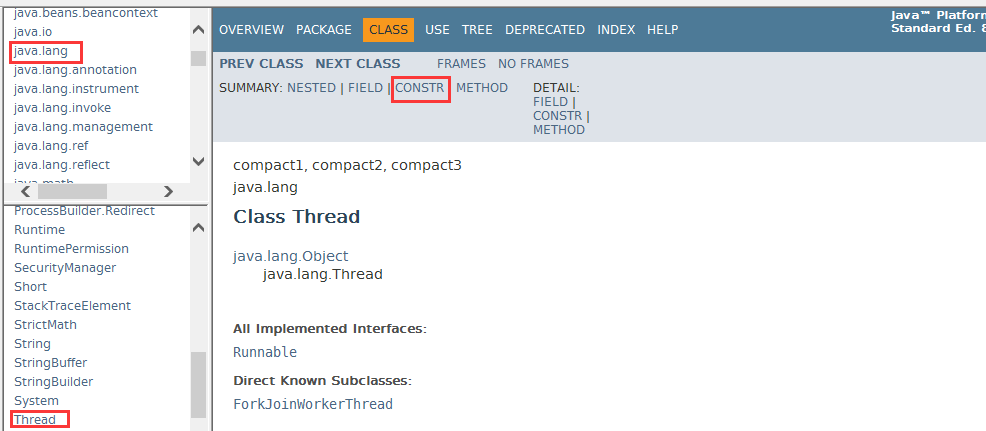
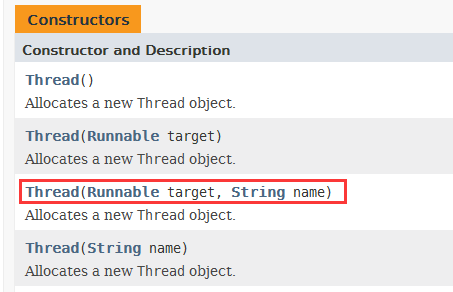
Thread(Runnable target, String name) 这个是什么方式,研究一下
6.4.4实现runnable方法
class MyThread implements Runnable//新建类实现runnable接口
new Thread(new MyThread,...)
这种方法会新增类,有更新更好的方法
6.4.5 匿名内部类
new Thread(new Runnable() {
@Override
public void run() {
}
}, "your thread name").start();
这种方法不需要创建新的类,可以new接口
6.4.6 lambda表达式(这个使用有前提,接口里面只有一个方法才可以,jdk1.8特性,)
new Thread(() -> {
}, "your thread name").start();
这种方法代码更简洁精炼
对于jdk1.8来说,在接口里也是可以写实现方法的,需要在方法前写一个default关键字或者static关键字,就可以在接口里写具体的实现类了
代码如下:
package com.liuyuanyuan.thread;
import java.util.concurrent.locks.Lock;
import java.util.concurrent.locks.ReentrantLock;
class Ticket //实例例eld +method
{
private int number=30;
/* //1同步 public synchronized void sale()
{//2同步 synchronized(this) {}
if(number > 0) {
System.out.println(Thread.currentThread().getName()+"卖出"+(number--)+"\t 还剩number);
}
}*/
// Lock implementations provide more extensive locking operations
// than can be obtained using synchronized methods and statements.
private Lock lock = new ReentrantLock();//List list = new ArrayList()
public void sale()
{
lock.lock();
try {
if(number > 0) {
System.out.println(Thread.currentThread().getName()+"卖出"+(number--)+"\t 还剩number);
}
} catch (Exception e) {
e.printStackTrace();
} finally {
lock.unlock();
}
}
}
/**
*
* @Description:卖票程序个售票出 0张票
@author liuyuan
* 笔记:J里面如何 1 多线程编-上
1.1 线程 (资里源类 * 1.2 高内聚 /
public class SaleTicket
{
public static void main(String[] args)//main所有程序
Ticket ticket = new Ticket();
//Thread(Runnable target, String name) Allocates a new Thread object.
new Thread(() -> {for (int i = 1; i < 40; i++)ticket.sale();}, "AA").start();
new Thread(() -> {for (int i = 1; i < 40; i++)ticket.sale();}, "BB").start();
new Thread(() -> {for (int i = 1; i < 40; i++)ticket.sale();}, "CC").start();
/* new Thread(new Runnable() {
@Override
public void run()
{
for (int i = 1; i <=40; i++)
{
ticket.sale();
}
}
}, "AA").start();
new Thread(new Runnable() {
@Override
public void run()
{
for (int i = 1; i <=40; i++)
{
ticket.sale();
}
}
}, "BB").start();
new Thread(new Runnable() {
@Override
public void run()
{
for (int i = 1; i <=40; i++)
{
ticket.sale();
}
}
}, "CC").start();
*/
}
}
//1 class MyThread implements Runnable
//2 匿名内部类
//3 laExpress
1.5接下来介绍一下jdk1.8的特性lambda表达式
什么是Lambda
Lambda 是一个匿名函数,我们可以把 Lambda
表达式理解为是一段可以传递的代码(将代码
像数据一样进行传递)。可以写出更简洁、更
灵活的代码。作为一种更紧凑的代码风格,使
Java的语言表达能力得到了提升。
Lambda 表达式在Java 语言中引入了一个新的语法元
素和操作符。这个操作符为 “->” , 该操作符被称
为 Lambda 操作符或剪头操作符。它将 Lambda 分为
两个部分:
左侧:指定了 Lambda 表达式需要的所有参数
右侧:指定了 Lambda 体,即 Lambda 表达式要执行
的功能
1.6 lambda表达式,如果一个接口只有一个方法,我可以把方法名省略
Foo foo = () -> {System.out.println("****hello lambda");};
1.7
lambda表达式,必须是函数式接口,必须只有一个方法
如果接口只有一个方法java默认它为函数式接口。
为了正确使用Lambda表达式,需要给接口加个注解:@FunctionalInterface
如有两个方法,立刻报错
Runnable接口为什么可以用lambda表达式?
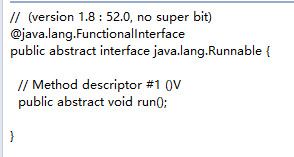
接口里是否能有实现方法?
default方法
接口里在java8后容许有接口的实现,default方法默认实现
default int div(int x,int y) {
return x/y;
}
接口里default方法可以有几个?
静态方法实现
静态方法实现:接口新增
public static int sub(int x,int y){
return x-y;
}
可以有几个?
注意静态的叫类方法,能用foo去调吗?要改成Foo
代码实现:
package com.liuyuanyuan.thread;
@FunctionalInterface
interface Foo{
// public void sayHello() ;
// public void say886() ;
public int add(int x,int y);
default int div(int x,int y) {
return x/y;
}
public static int sub(int x,int y) {
return x-y;
}
}
/**
*
* @Description: Lambda Express-----> 函数式编程
* @author xialei
* 1 拷贝小括号(形参列表),写死右箭头 ->,落地大括号 {方法实现}
* 2 有且只有一个public方法@FunctionalInterface注解增强定义
* 3 default方法默认实现
* 4 静态方法实现
*/
public class LambdaDemo
{
public static void main(String[] args)
{
// Foo foo = new Foo() {
// @Override
// public void sayHello() {
// System.out.println("Hello!!");
// }
//
// @Override
// public void say886() {
// // TODO Auto-generated method stub
//
// }
// };
// foo.sayHello();
// System.out.println("============");
// foo = ()->{System.out.println("Hello!! lambda !!");};
// foo.sayHello();
Foo foo = (x,y)->{
System.out.println("Hello!! lambda !!");
return x+y;
};
int result = foo.add(3,5);
System.out.println("******result="+result);
System.out.println("******result div="+foo.div(10, 2));
System.out.println("******result sub="+Foo.sub(10, 2));
}
}













